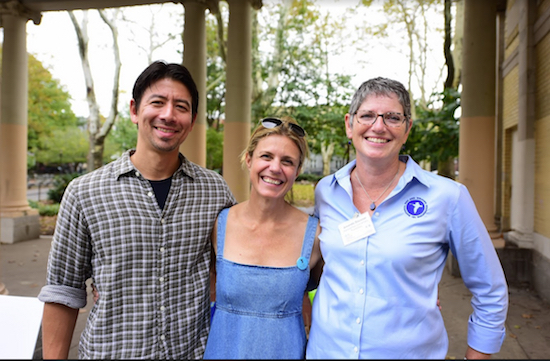Greenpoint Community Environmental Fund showcases progress in second annual Open House
ExxonMobile Settlement Money Funds Community Projects From a New Library to Safety of Migratory Birds

From left: Filip Stabrowski, Laura Treciokas and Amanda Bassow of the National Fish and Wildlife Foundation. Eagle photos by Andy Katz
By late afternoon at Monsignor McGolrick Park on Oct. 14, people were packing up displays, folding charts, placing live organic samples carefully into transport containers, wiping down binoculars, stacking trays of plants, upending long tables and folding their legs in. NYPD Captain Victoria Perry of the 94th Precinct chatted with Kostancja Malesynska of Open Space Alliance for North Brooklyn and North Brooklyn Development Corporation General Administrator Richard Mazur.
